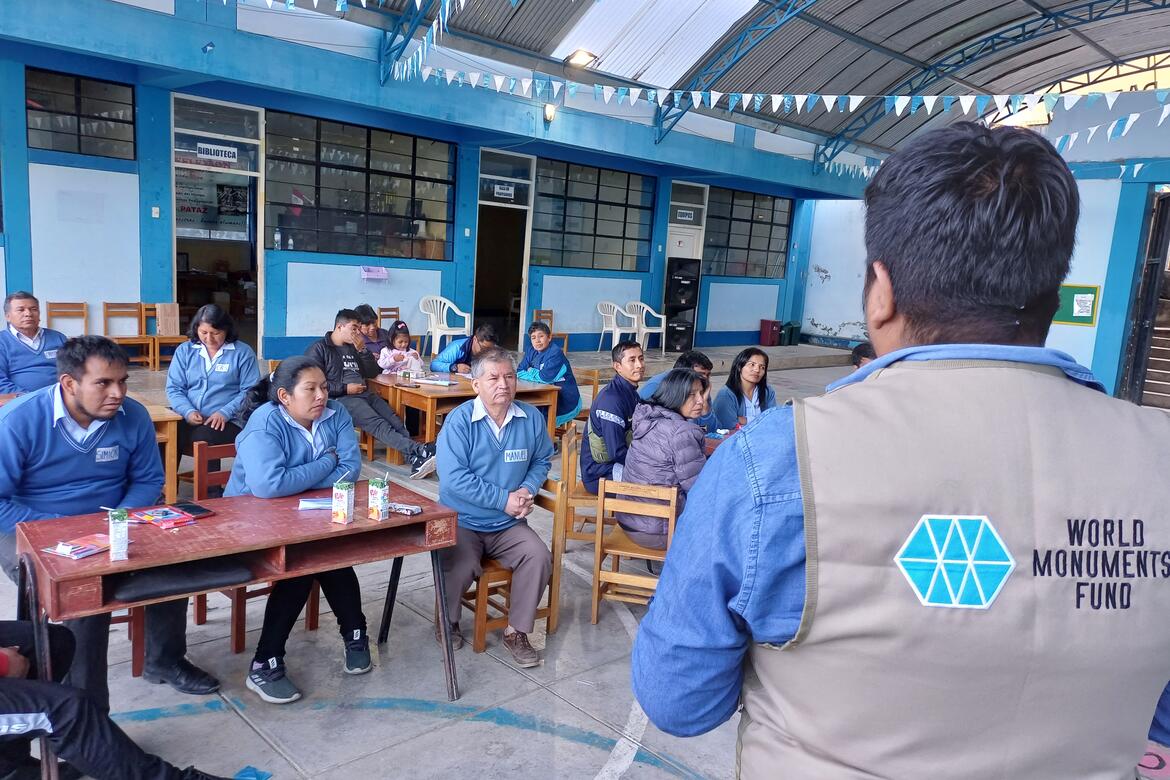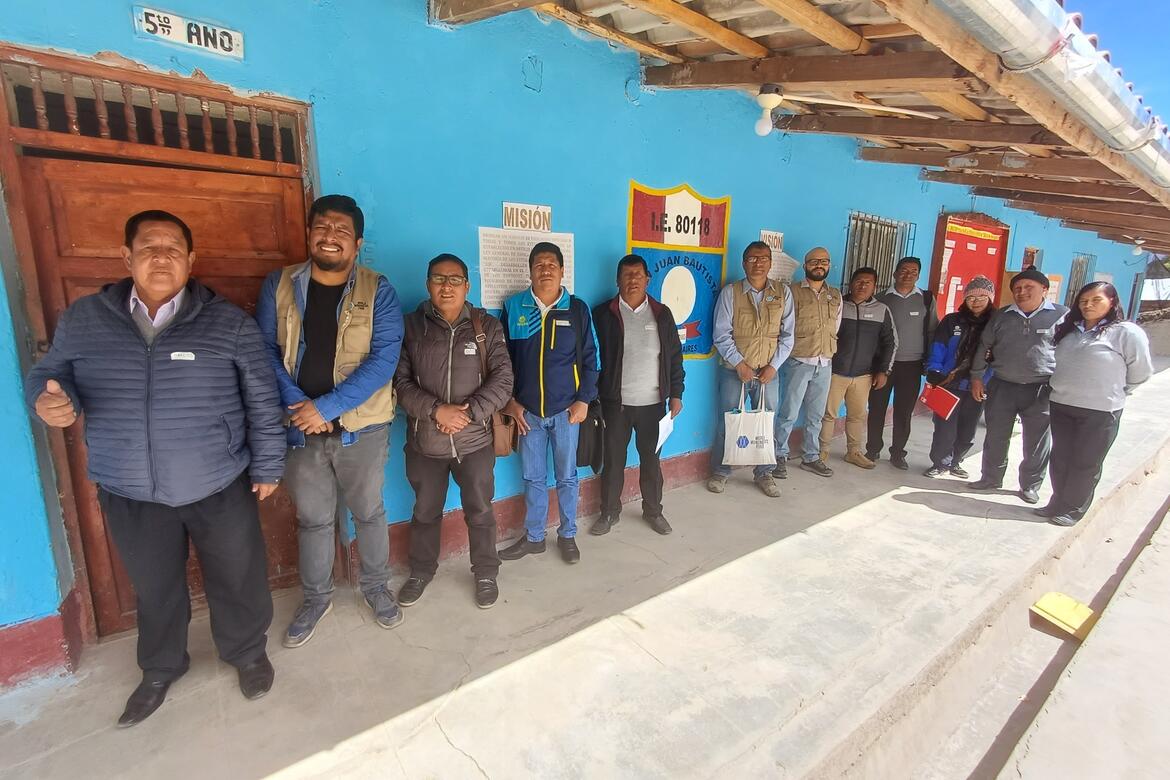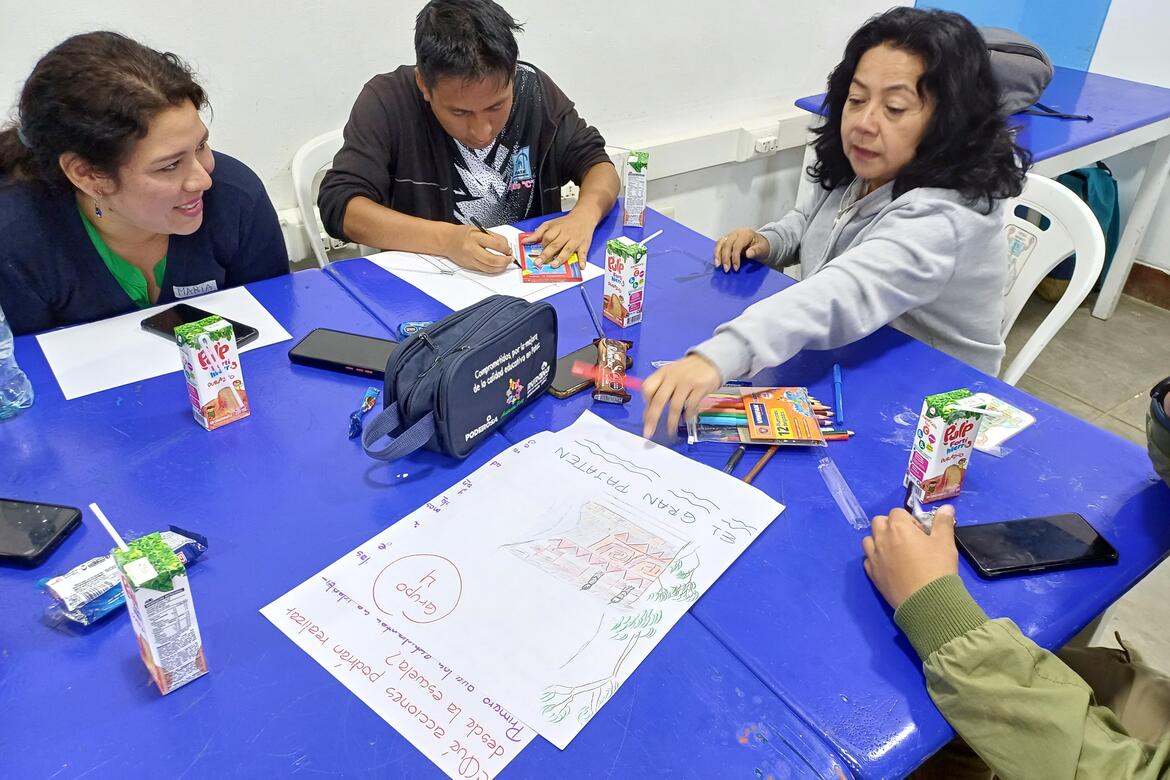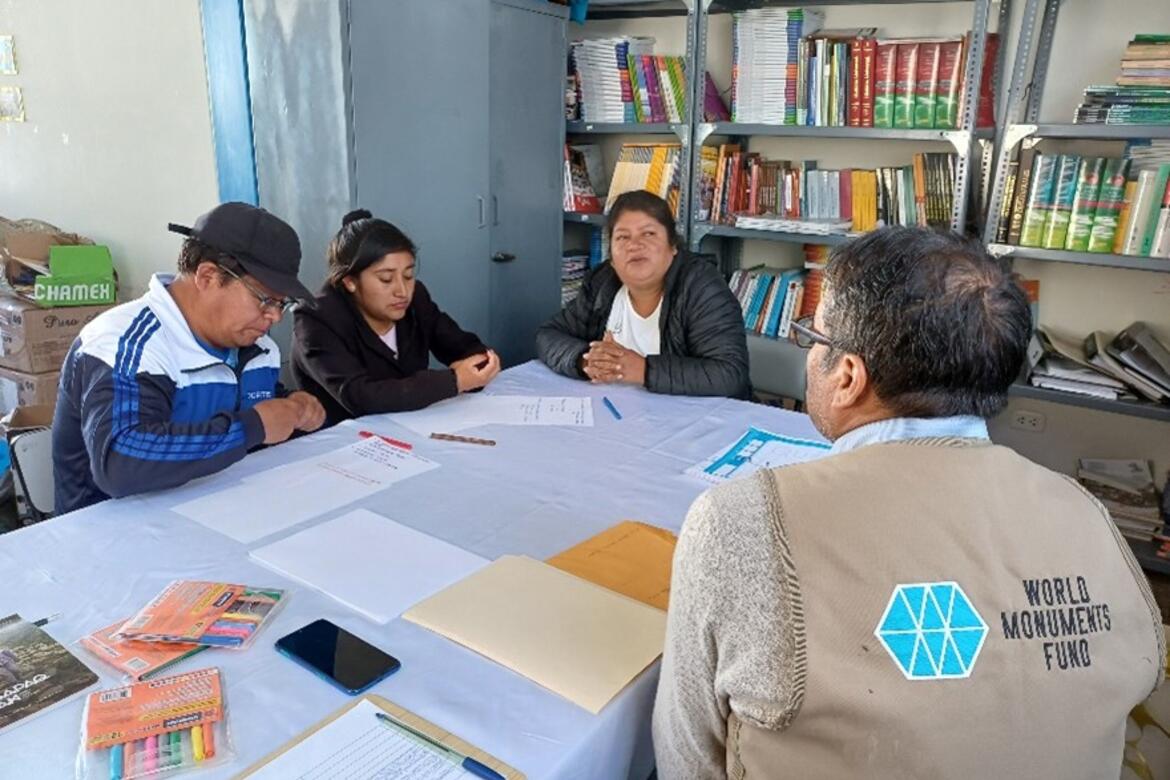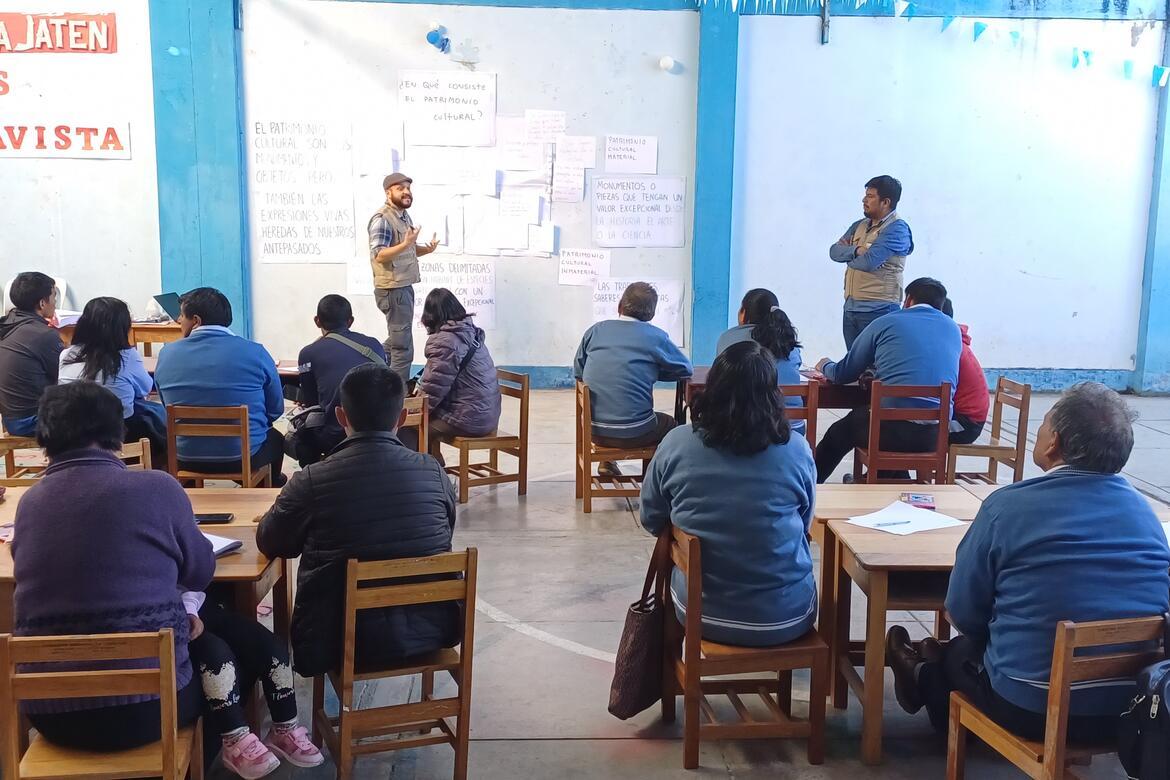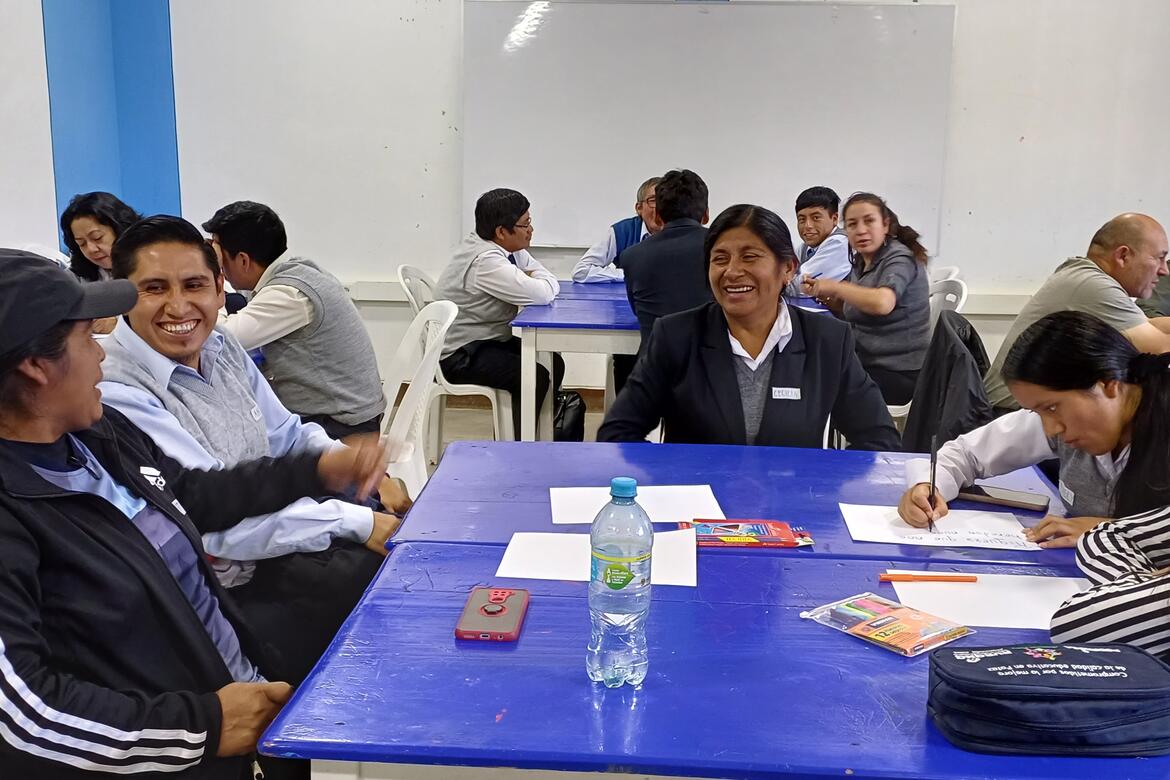Río Abiseo: Work with Local Populations in the Buffer Zone
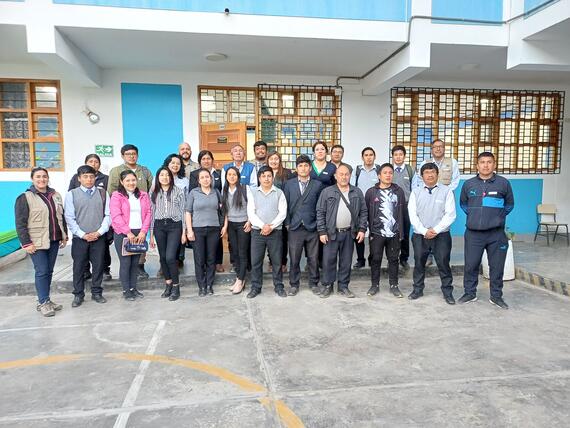
A central part of World Monuments Fund’s (WMF) ongoing work at Río Abiseo National Park (PNRA) is promoting not just the protection of the park’s incredible monuments but the cultural heritage identity of its surrounding communities. The PNRA, located in the San Martín region of Peru, has a buffer zone—or protected peripheral area—that covers La Libertad region. The districts closest to the Historical-Cultural Zone (HC-1), where the archaeological sites of Gran Pajatén and Los Pinchudos are located, are those of Pías, Pataz, and Condormarca, whose economy is basically agricultural.
In the past, the archaeological sites of HC-1 and the surrounding areas were connected by the Inca Trail, evidence of which remains well-preserved in certain sections. Older adults describe how past inhabitants of the jungle in Juanjuí went up to the mountains to trade.
The inhabitants of these areas have been integral to the success of multiple scientific expeditions into the PNRA since the discovery of archaeological remains there in the 60s. As part of WMF Peru’s project at Río Abiseo, we hope to find out how much the park’s archaeological sites can benefit them economically with good practices in the production processes in the buffer zone, including the use of the cultural monuments' typical iconographic motifs and learn what perception they have of these places.
During our first field trip to the area in October 2022, we identified three problems: insufficient information about the park’s archaeological sites, confusion about what institutions managed them, and diverse interests regarding their social utility.
Using this framework, we defined three lines of action for the project’s social component: better communication about economic development, heritage education, and stronger institutions. Our general objective is to raise awareness among the local community regarding the environmental and cultural aspects of the park and to develop a solid commitment to its protection and social use in accordance with current national legislation and the PNRA’s management plans.
To this end, we have been undertaking various activities, such as interviews with local authorities and community presidents, workshops with teachers and high school students, and surveys of public opinion. We have also developed five workshops for teachers (63 participants) and two workshops for high school students (50 participants).
Alongside these tasks, we coordinated with local civil associations to take part in efforts that promote Sustainable Development Goals (SDG), which serve as a planning tool for countries, both at a global and local level. Our actions are linked to Goal 11, making cities more inclusive and safer, resilient, and sustainable, and specifically with Goal 11.4, redoubling efforts to protect and safeguard the world’s cultural and natural heritage.
Part of our work also involves collaborating with the Ministry of Culture of Peru at selected educational centers to incorporate the “Defenders of Cultural Heritage”, a strategy that seeks to train teachers, students, and civil society organizations in the safeguarding of cultural heritage (material and intangible).
Another objective involves advising on the listing of local archaeological and historical sites as National Cultural Heritage. We are currently advocating for the archaeological sites Cerro Tamburco in Pías and Pueblo Viejo in Condormarca.
The initial results, based on interviews with local authorities, workshops with teachers, and preliminary analysis of our surveys, show that the population is knowledgeable and aware of the cultural heritage they possess and wants concrete actions and professional guidance that will enhance its value and strengthen their identity. Local residents see heritage sites as cultural resources that generate both economic and social benefits. This is something highly sought by the populations of the buffer zone, and our upcoming expedition to the eastern side of the park will allow us to continue researching how preserving its heritage sites can benefit the public at large.
Learn More
World Monuments Fund safeguards cultural heritage around the globe, ensuring our treasured places are preserved for present and future generations.
Sign up for our newsletter to receive regular updates on our projects, stories from the field, upcoming events, and more!

